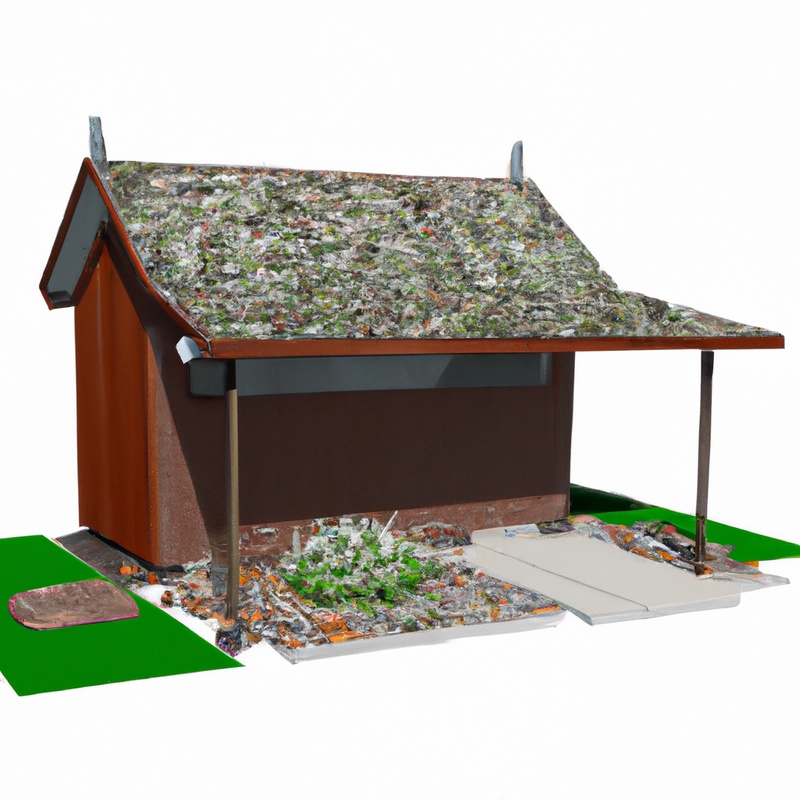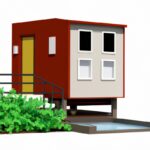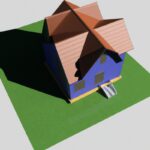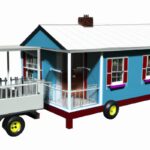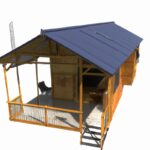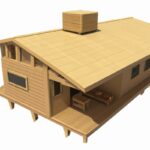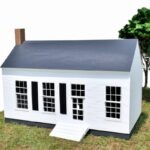Key Takeaways:
- Off-grid living in a tiny house is possible and gaining popularity.
- Essential factors for off-grid living in a tiny house include energy, water, and waste management.
- Sustainable practices such as solar power and rainwater harvesting are commonly used by off-grid tiny house dwellers.
- Living off-grid in a tiny house can provide independence, cost savings, and a minimalist lifestyle.
Are you ready for a life of freedom, simplicity, and self-sufficiency? Imagine living in a cozy, compact space that is cost-effective and has a minimal ecological footprint.
Welcome to the world of off-grid living in a tiny house! In this blog, I will guide you through the pros and challenges of living off-grid in a tiny house, and provide you with the essential needs, steps, and resources to make your dream a reality.
From solar power systems to sustainable food production, get ready to embark on a journey towards a more independent and sustainable lifestyle. So, can you live in a tiny house off-grid?
Let’s find out!
Factors | Yes | No |
|---|---|---|
Size | Small and compact | Not suitable for large families |
Energy | Can use solar panels, wind turbines | May require connection to grid |
Water | Can have rainwater harvesting, compost toilets | May need access to public water system |
Cost | Lower upfront costs, reduced bills | May require significant upfront investment |
Freedom | Less reliance on utilities, more flexibility | May require adherence to local regulations |
Pros of Living in a Tiny House off-grid
Cost-effectiveness and Affordability
Living in a tiny house off-grid offers a significant cost-effectiveness and affordability advantage. The smaller size of a tiny house means lower construction and maintenance costs.
You can often build and customize your tiny house on a budget, using recycled or repurposed materials.
In terms of ongoing expenses, off-grid living allows you to reduce or eliminate utility bills, such as electricity and water. You can generate your own power through solar panels and collect rainwater for various uses.
This financial freedom gives you the opportunity to save money, pay off debts, or pursue other financial goals.
Additionally, living in a tiny house encourages a minimalist lifestyle, reducing the need for excessive spending and consumerism.
Minimal Ecological Footprint
Living in a tiny house off-grid can significantly minimize your ecological footprint.
With limited space, you are forced to simplify your lifestyle and reduce your consumption of resources.
You will naturally use less energy, produce less waste, and conserve water.
By utilizing renewable energy sources and implementing sustainable practices, such as composting and water conservation, you can minimize your impact on the environment.
Additionally, living off-grid encourages a greater connection with nature and a deeper appreciation for the resources we have.
Freedom and Simplified Lifestyle
Living in a tiny house off-grid offers a sense of freedom and a simplified lifestyle. With fewer possessions and a smaller living space, you’re able to focus on the things that truly matter.
You’ll spend less time cleaning and maintaining your home, allowing you more time to pursue your passions and enjoy the outdoors.
The reduced financial burden and minimal ecological footprint also contribute to a greater sense of freedom and peace of mind. Overall, living in a tiny house off-grid gives you the opportunity to live life on your own terms and find fulfillment in simplicity.
Self-sufficiency and Independence
Self-sufficiency and independence are key benefits of living off-grid in a tiny house.
With careful planning and the right resources, you can meet your basic needs without relying on external systems.
Generating your own power through solar panels and collecting rainwater for usage ensures uninterrupted supply even in remote locations.
Additionally, implementing sustainable food production methods such as gardening and preserving techniques fosters self-reliance.
Living off-grid in a tiny house allows you to take control of your lifestyle and reduce dependence on external sources.
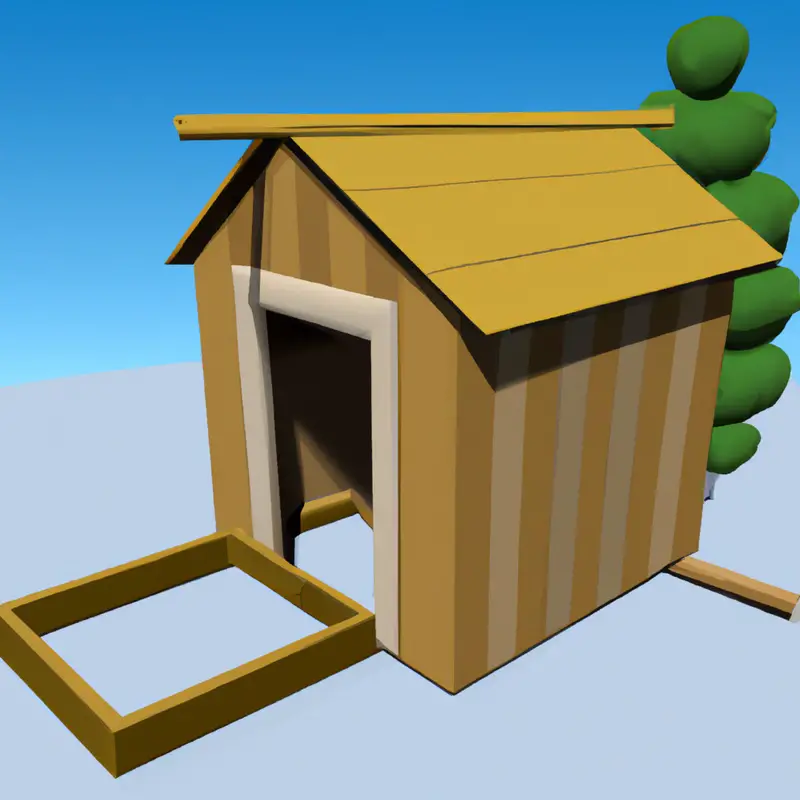
Challenges of Living in a Tiny House off-grid
Limited Space and Storage
Living in a tiny house off-grid poses some challenges, and limited space and storage is one of them.
With a small square footage, you need to optimize every inch of space.
Creative storage solutions like utilizing vertical space, built-in furniture, and multi-functional pieces are key.
Consider using under-bed storage, hanging organizers, and collapsible furniture to maximize your space.
Declutter regularly to maintain a clutter-free environment.
Efficient organization and thoughtful storage solutions will ensure that you have enough room for your essentials and a comfortable living space.
Energy and Water Management
When living off-grid in a tiny house, managing energy and water is essential.
Solar power systems are commonly used to generate electricity, providing a sustainable and renewable energy source.
Water collection and filtration methods are employed to ensure a sufficient supply of clean drinking water.
Composting toilets are a popular choice for waste management.
These systems, combined with energy-efficient appliances and mindful water usage, allow for a more self-sufficient and eco-friendly lifestyle.
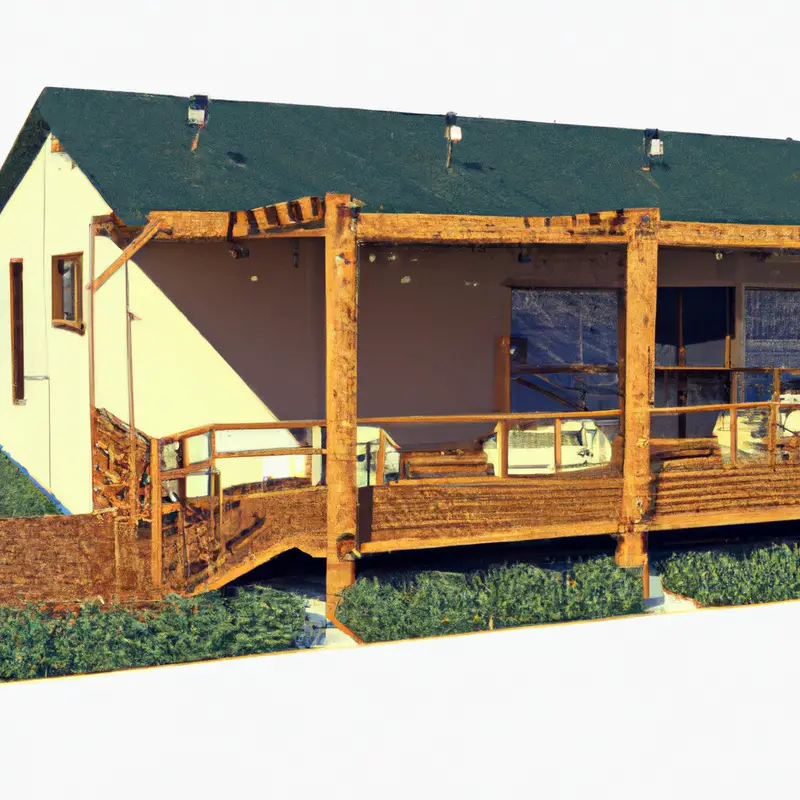
Zoning and Legal Restrictions
Zoning and legal restrictions are important considerations when living in a tiny house off-grid.
It’s essential to understand the regulations and requirements in your area regarding the placement and use of tiny houses.
Some areas may have specific zoning laws that restrict where you can park or live in a tiny house, while others may require permits or certifications.
It’s crucial to research and comply with these regulations to avoid potential fines or legal issues.
Consulting with local authorities or a legal professional can help navigate these restrictions and ensure a smooth off-grid living experience.
Social Isolation
Living in a tiny house off-grid can be a rewarding experience, but it’s important to be aware of the challenges, including social isolation.
Due to the remote locations of many off-grid tiny houses, it can be difficult to have regular social interactions with neighbors or access to community amenities.
However, there are ways to combat social isolation, such as joining local community groups, attending events or workshops, and maintaining strong connections with friends and family.
It’s crucial to find a balance between enjoying solitude and actively seeking social connections to avoid feeling isolated.
Essential Needs for off-grid Living in a Tiny House
Solar Power System
One important aspect of off-grid living in a tiny house is having a solar power system. This system allows you to generate your own electricity from the sun, providing you with a renewable and sustainable energy source.
With a solar power system, you can power your lights, appliances, and other electrical devices without relying on the grid.
It typically consists of solar panels, a charge controller, batteries, and an inverter. The solar panels collect sunlight and convert it into electricity, which is then stored in the batteries for use when the sun is not shining.
The charge controller ensures that the batteries are charged properly and protects them from overcharging.
The inverter converts the stored DC electricity into AC electricity that can be used to power your home. By installing a solar power system, you can enjoy the benefits of off-grid living while reducing your environmental impact and saving on energy costs.
Water Collection and Filtration Methods
Water collection and filtration are essential for off-grid living in a tiny house.
Rainwater harvesting is a popular method, where the water is collected from the roof into storage tanks.
Filtration systems like carbon filters and UV filters remove impurities and make it safe to drink.
Other options include well water and spring water, which can be filtered using portable filtration systems.
It’s important to regularly maintain and clean the collection and filtration systems to ensure a continuous supply of clean water.
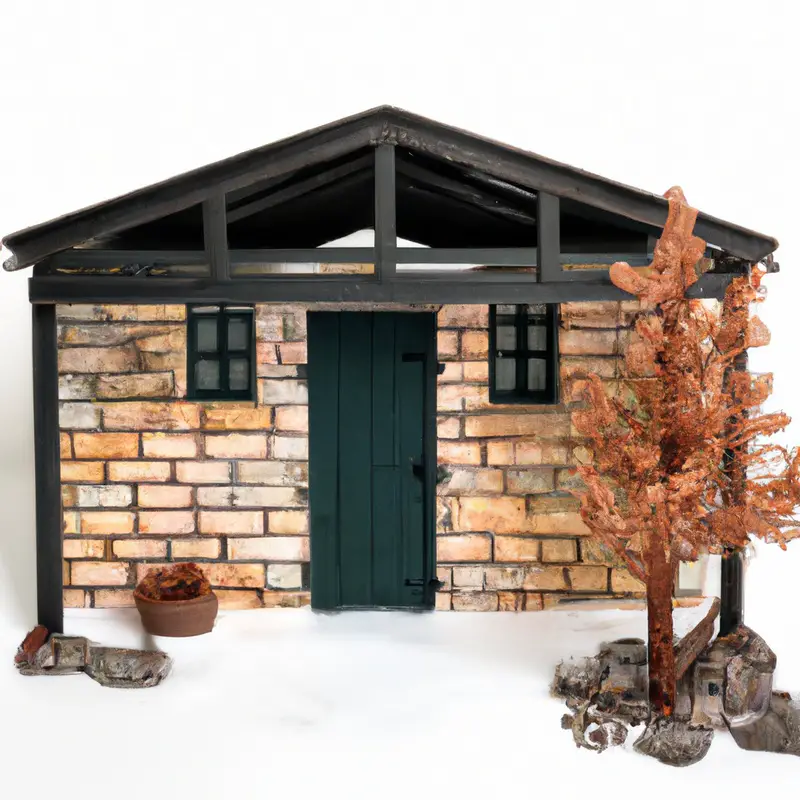
Composting Toilet and Waste Management
Composting toilets are a great option for off-grid living in a tiny house. They use natural processes to break down waste into compost, which can be used as fertilizer.
They are cost-effective and environmentally friendly, as they don’t require water or electricity.
Proper waste management is important to maintain cleanliness and minimize odors. One can also consider greywater systems and recycling to reduce waste.
By utilizing composting toilets and implementing effective waste management practices, living off-grid in a tiny house becomes more sustainable and self-sufficient.
Sustainable Food Production and Storage
Sustainable food production and storage are vital for off-grid living in a tiny house. Growing your own food through gardening or hydroponics can provide fresh produce and reduce your reliance on external sources.
Storing food properly using methods like canning, dehydrating, or root cellaring can help sustain you during lean seasons.
Utilizing composting methods will also contribute to sustainable food production. Don’t forget to consider the climate and available space when planning your food production and storage systems.
Steps to Begin Living in a Tiny House off-grid
Research and Planning
Research and planning are essential steps to successfully live off-grid in a tiny house.
Before diving into this lifestyle, it’s important to gather information about off-grid living, regulations, and available resources.
Research different sustainable technologies for energy, water, and waste management.
Consider factors such as climate, location, and zoning laws.
Plan your budget, timeline, and necessary permits.
By thoroughly researching and strategically planning, you can ensure a smooth transition to off-grid living in your tiny house.
Designing and Building your Tiny House
Designing and building your tiny house is an exciting and creative process.
Start by determining your needs and priorities for the space.
Consider the layout, materials, and features that will optimize function and comfort.
Keep in mind the dimensions and weight restrictions when designing.
Look for inspiration and ideas from existing tiny houses and consult with professionals if needed.
During the construction phase, pay attention to energy-efficient techniques, insulation, and storage solutions.
Remember to prioritize safety and compliance with building codes.
Enjoy the journey of creating your own unique tiny house!
Choosing the Right Location
Choosing the right location for your off-grid tiny house is essential. Here are some factors to consider:
- Climate: Assess the climate of the area you’re considering. Extreme temperatures or frequent storms can affect your comfort and energy needs.
- Access to resources: Look for locations with easy access to water sources, sunlight for solar power, and viable options for waste disposal.
- Zoning regulations: Check local zoning and building codes to ensure your tiny house is allowed in the area you have in mind.
- Proximity to amenities: Consider the distance to essential amenities like grocery stores, hospitals, and schools. Living off-grid doesn’t mean living in isolation.
- Natural surroundings: Choose a location that aligns with your lifestyle and preferences. Whether it’s a forest, mountain, or coastal area, find a place that offers the natural beauty you desire.
Remember, location is key to a successful off-grid living experience. Take your time to research, visit different areas, and evaluate their suitability based on your needs and desires.
Obtaining Necessary Permits and Legalities
Obtaining the necessary permits and understanding the legalities involved in living off-grid in a tiny house is essential. Each jurisdiction has its own regulations, so research and consultation with local authorities is crucial.
You may need to apply for permits related to zoning, building codes, and utilities.
Some areas may have restrictions on dwellings without a permanent foundation or living off-grid. It’s important to thoroughly understand and comply with all applicable laws and regulations to ensure a smooth and legal transition to off-grid living.
Resources and Tools for off-grid Living in a Tiny House
Renewable Energy Sources and Systems
Renewable energy sources and systems are essential for off-grid living in a tiny house.
Solar power is a popular choice, with photovoltaic panels collecting energy from the sun.
Wind turbines can generate electricity from the wind, while hydroelectric systems utilize flowing water.
Biomass energy utilizes organic matter like wood or plant waste.
These renewable sources provide sustainable and environmentally-friendly power, reducing reliance on fossil fuels.
It’s important to design and implement an efficient energy system to meet the needs of off-grid living and minimize environmental impact.
Additionally, battery storage systems can store excess energy for use during periods of low renewable energy production.
Water Conservation and Filtration Technologies
Water conservation and filtration technologies are essential for off-grid living in a tiny house. Installing low-flow fixtures, such as aerators and showerheads, can significantly reduce water usage.
Additionally, collecting rainwater in a storage tank is a cost-effective way to meet your water needs.
To ensure clean and safe drinking water, consider using filtration systems like activated carbon filters or UV sterilizers. These technologies not only help conserve water but also provide you with a sustainable and reliable water supply for your off-grid lifestyle.
Sustainable Food Production Techniques
Sustainable food production in a tiny house off-grid is all about growing your own food in an eco-friendly manner. Here are some techniques you can use:
- Vertical gardening: Utilize vertical space by growing plants on walls or trellises. This maximizes yield while saving space.
- Container gardening: Grow herbs, vegetables, and fruits in containers. This is especially useful if you have limited outdoor space.
- Hydroponics and aquaponics: These methods allow you to grow plants without soil, using nutrient-rich water. Aquaponics combines fish farming with plant cultivation, creating a symbiotic system.
- Composting: Create nutrient-rich soil for your plants by composting kitchen scraps, yard waste, and even waste from your composting toilet.
Remember, sustainable food production also involves using organic methods, conserving water, and practicing crop rotation. Happy gardening!
Composting and Waste Management Solutions
When it comes to composting and waste management solutions for off-grid living in a tiny house, there are a few options to consider.
One popular choice is a composting toilet, which allows for the breakdown of human waste into nutrient-rich compost.
This can then be safely used to fertilize plants or trees.
Additionally, separating and composting food scraps can help reduce waste and create valuable compost for gardening.
It’s important to research and choose the right composting system for your needs, ensuring that it is legal and regulated in your area.
Final Verdict
Living in a tiny house off-grid can offer numerous advantages and challenges. On the positive side, it is cost-effective, eco-friendly, and promotes a simplified lifestyle with increased freedom and self-sufficiency.
However, limited space, energy and water management, zoning restrictions, and social isolation can present obstacles.
To begin this journey, extensive research, careful planning, and adherence to legal requirements are essential. Additionally, acquiring resources and tools such as renewable energy systems, water filtration technologies, sustainable food production techniques, and waste management solutions are crucial.
Overall, living off-grid in a tiny house requires dedication, adaptability, and resourcefulness, but the rewards of sustainable, independent living are worth it.
